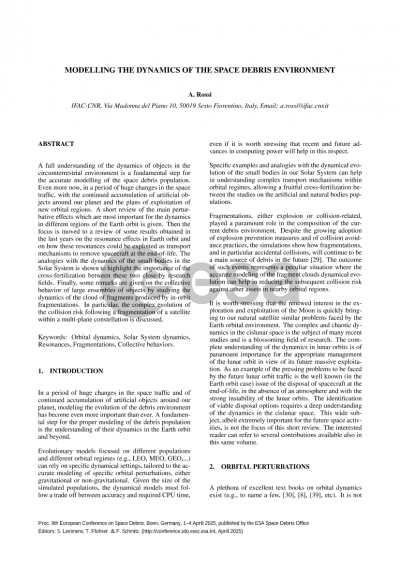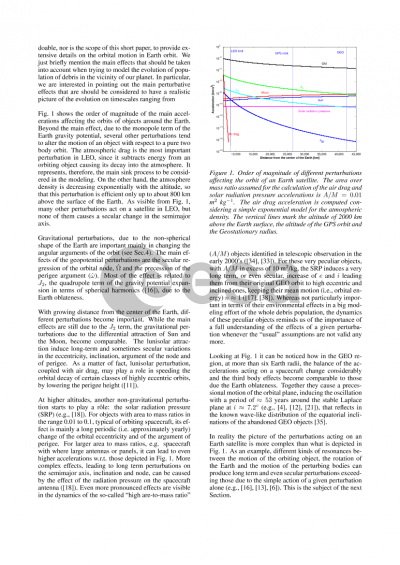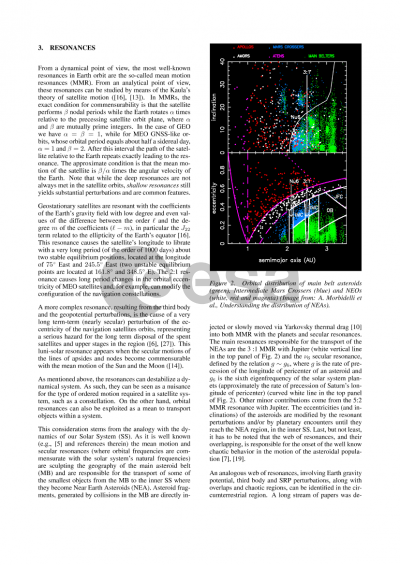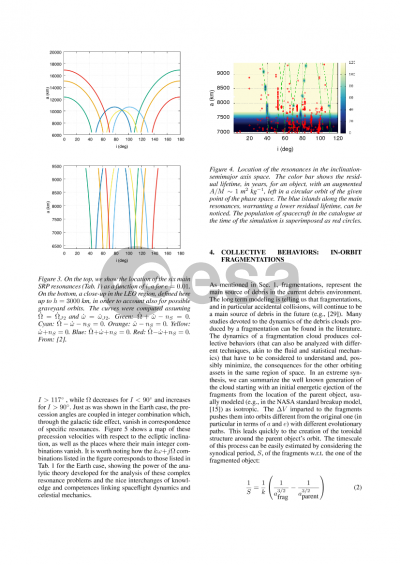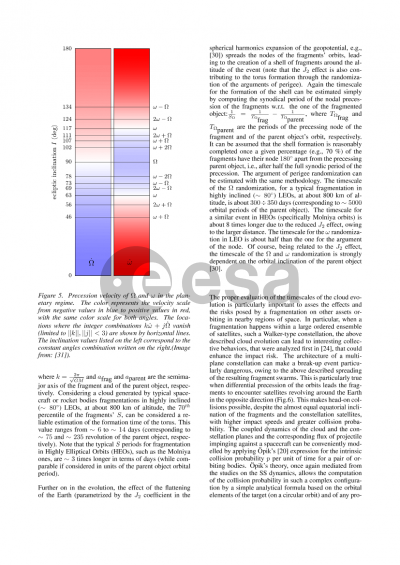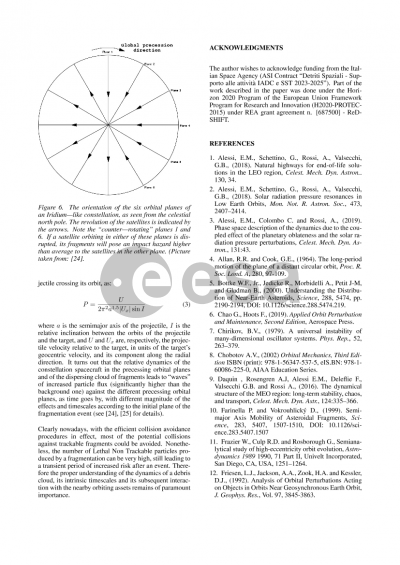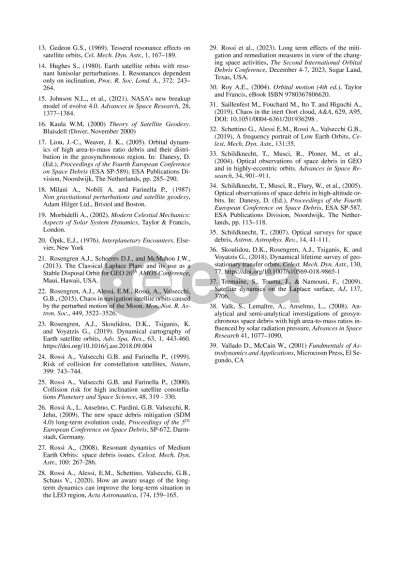Document details

Abstract
In a period of huge changes in the space traffic and of continued accumulation of artificial objects around our planet, modelling the evolution of the debris environment has become even more important than ever. A fundamental step for the proper modeling of the debris population is the understanding of their dynamics in the Earth orbit and beyond.
Evolutionary models focused on different populations and different orbital regimes (e.g., LEO, MEO, GEO,...) can rely on specific dynamical settings, taylored to the accurate modeling of specific orbital perturbations, either gravitational or non-gravitational. Given the size of the simulated populations, the dynamical models must follow a trade off between accuracy and required CPU time, even if it is worth stressing that recent and future advances in computing power will help in this respect.
Fragmentations, either explosion or collision-related, played a paramount role in the composition of the current debris environment.
Despite the growing adoption of explosion prevention measures and of collision avoidance practices, the simulations show how fragmentations, and in particular accidental collisions,
will continue to be a main source of debris in the future. The outcome of such events represents a peculiar situation where the accurate modeling of the fragment clouds dynamical evolution
can help in reducing the subsequent collision risk against other assets in nearby orbital regions.
In the talk we will analyze past and current efforts in the modelling of the dynamics of the debris environment in Earth orbit, with a specific focus on the risks posed by the fragmentation debris clouds. An eye will be also cast on the current efforts to model globally the Earth and cislunar environment as a whole.
Finally, it is worth stressing how the analogies with the dynamical evolution of the small bodies in our Solar System allows a fruitful cross-fertilization between the studies on the artificial and natural bodies populations
Acknowledgment: part of the work described in this abstract was performed under the ESA Contract "On-orbit breakup forensic" and under the ASI Contract “Detriti Spaziali - Supporto alle attività IADC e SST 2023-2025”.
Preview
